The ditch around the rice fields and its benefits
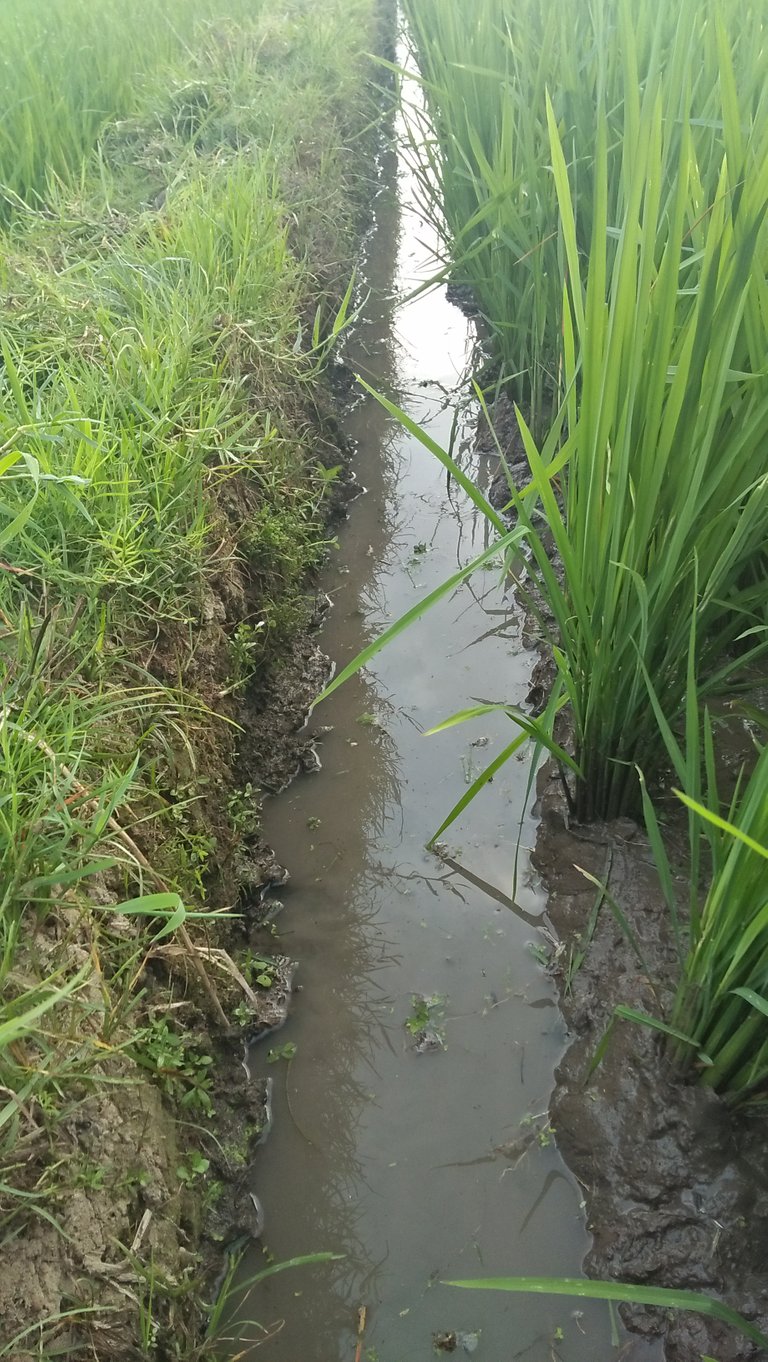
Hello friends, all ...
May blessings always be with us.
Morning is when we welcome a new day. I was called the right time to pick up sustenance. This is part of our efforts to become God's people.
Like a routine before going to office, I will take the time to go to the fields. I always leave after Fajr prayer. Five o'clock in the morning it looks bright and I am already in the fields.
The fresh air and cool air make me feel more excited to see the rice fields. Currently, the rice we care for is getting higher.
When I arrived at the rice fields, I got used to the development of rice fields on the embankments while storing rice. This is a form of our attention to plants so that they will grow well and give good results too.
Trench around the paddy area and its benefits.
Starting from several parts of the rice fields, it makes rice growth not optimal. I saw the rice fields in this map where a ditch was needed.
There are benefits that can be taken from the trench that is bolted around the rice fields, such as:
1. Easy drainage assistance
On land that is given a ditch around the rice fields, it will be easier to develop air conditioning. In our observation, the surrounding ditches will help the farmers to control the drainage system.
Soils that are too loose require drying so that the rice will grow well. The roots will be stronger in absorbing nutrients. Too much air will cause poor rice roots and can even cause the death of rice plants.
It will be easy for us to dry the land because we just have to open the channel and the air will flow through the ditch. When we are used to irrigate rice fields we just fill the air and it will spread even faster.
2. Pest control in rice fields.
Too much air in the land as well as lots of snails which will damage rice plants. To fix this without using medicine, we just need to dry the land and the snails will die. If they live they will look for air in the ditch around the rice fields. this will make it easier for us to take the snail and destroy it. Development of a chemical control plan.
How to make a ditch
When we planted rice, the trenches around the rice fields had not yet been made into seeds that we stuck to the edge of the rice fields. As a result, they grew up alongside the bund.
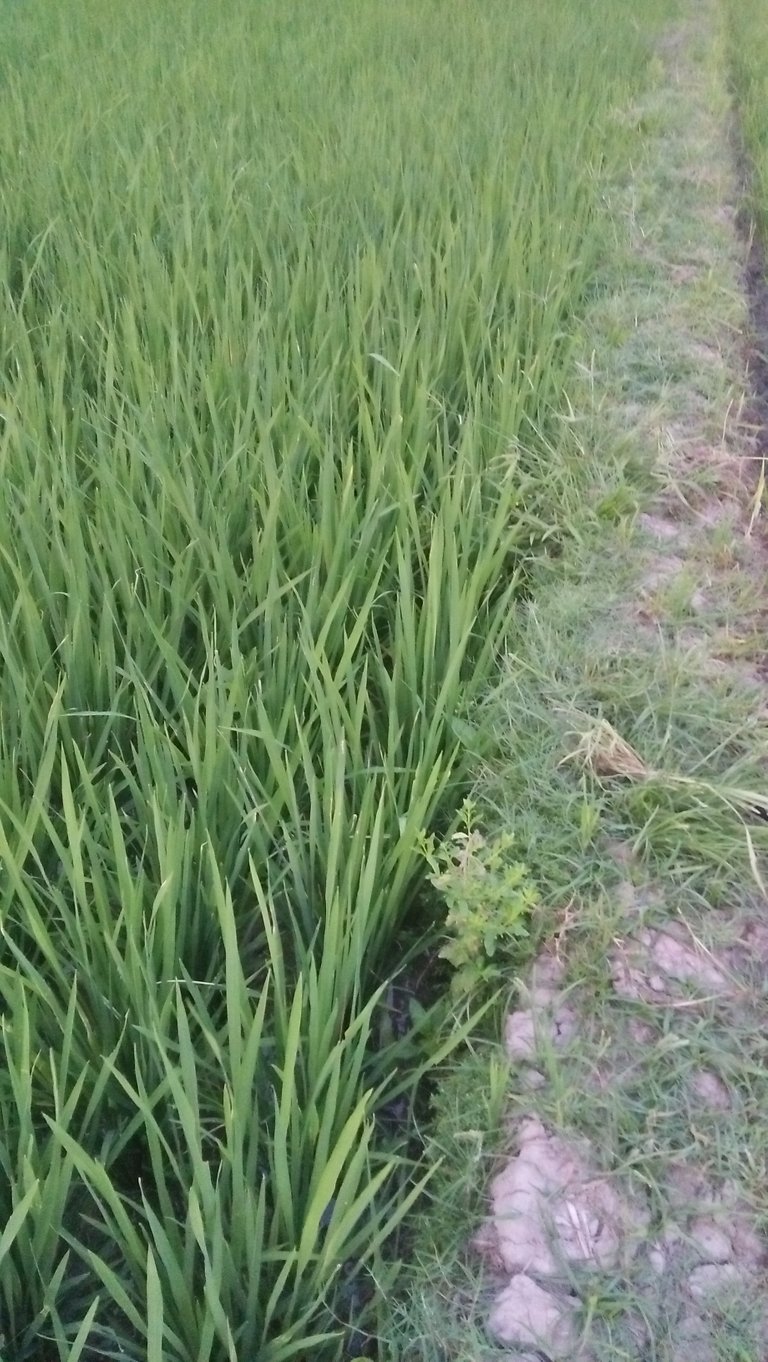
To make a ditch, I had to enter the rice area and see several rows of rice clumps closest to the embankments. In two rows of rice clumps we will move away from the embankments.
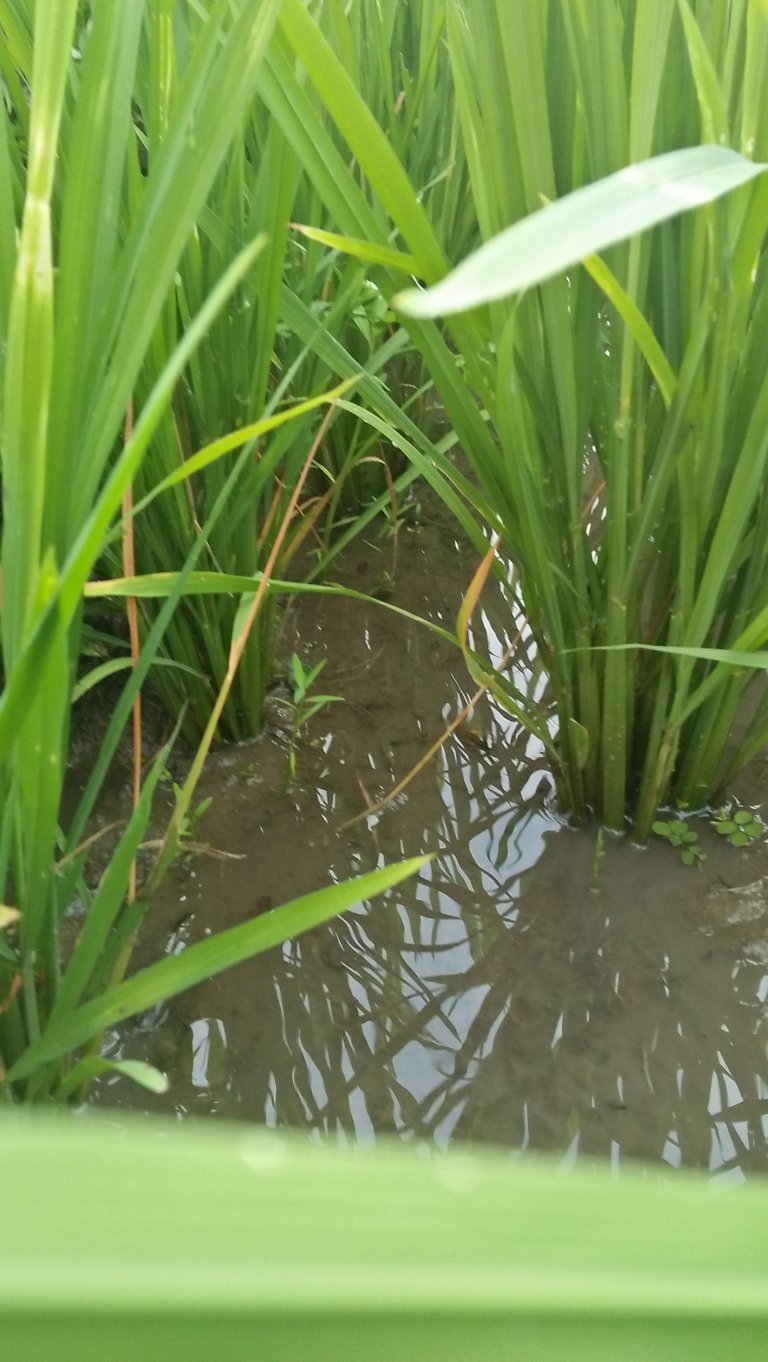
The second row of rice clumps we grow closer to the clumps of rice in the third row. As in the photo below, there is only one row closest to the rice field embankment.
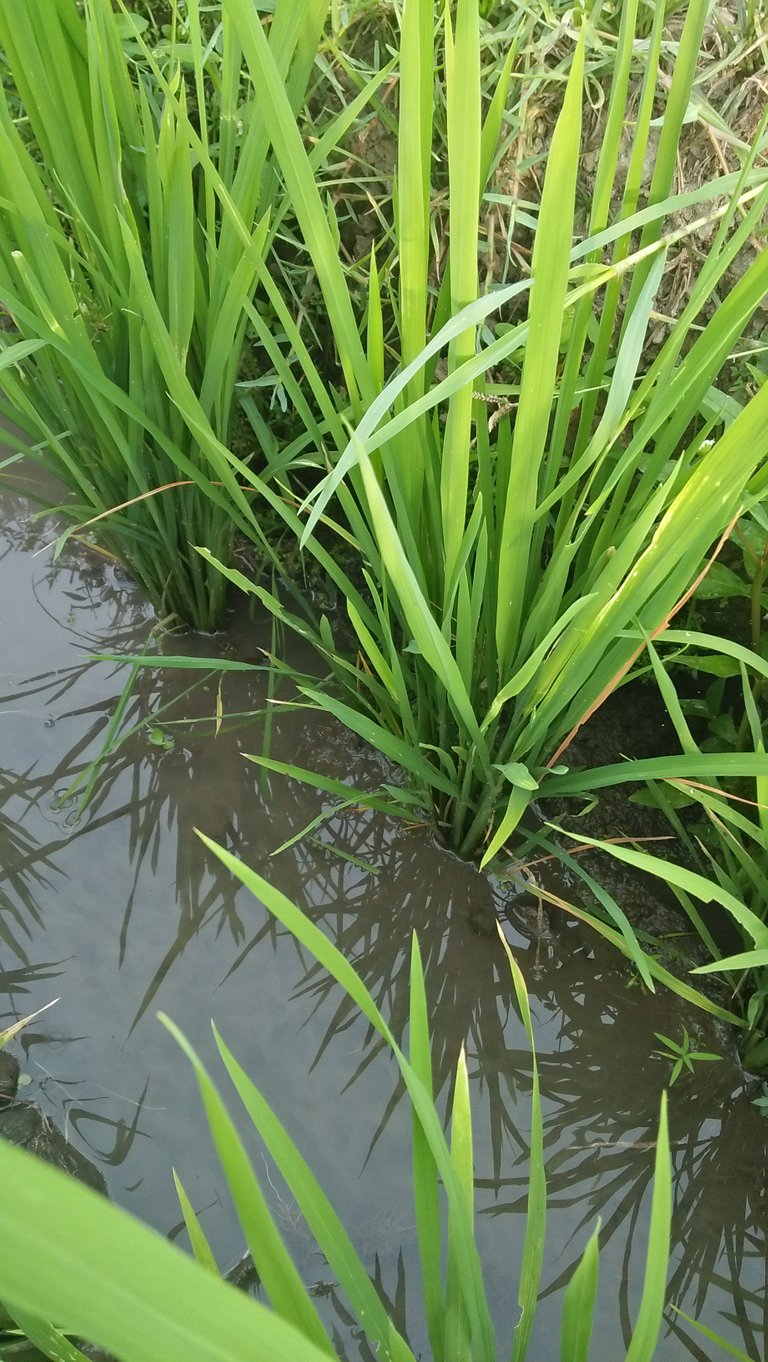
Move the rice clump closest to the rice field embankment by pulling out the rice clump along with the soil around the rice roots. This will help the rice is not damaged and can still absorb nutrients. Don't take only uprooted by plants without bringing the land It may be stressful for plants and not growing properly.
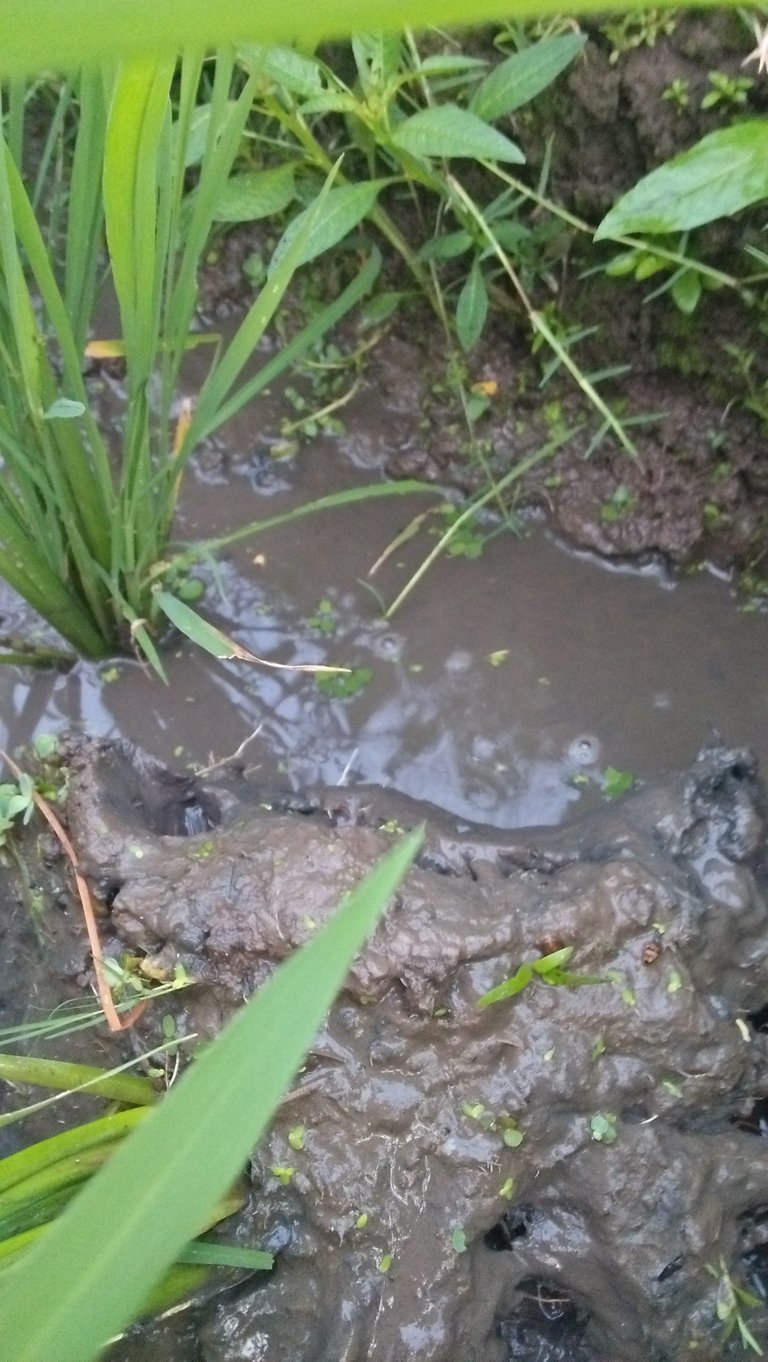
After being moved according to our wishes, you will see the water flow in the trench that we made as shown in the following photo. Clean the grass that creeps on the embankments so that it looks cleaner and does not interfere with rice growth.
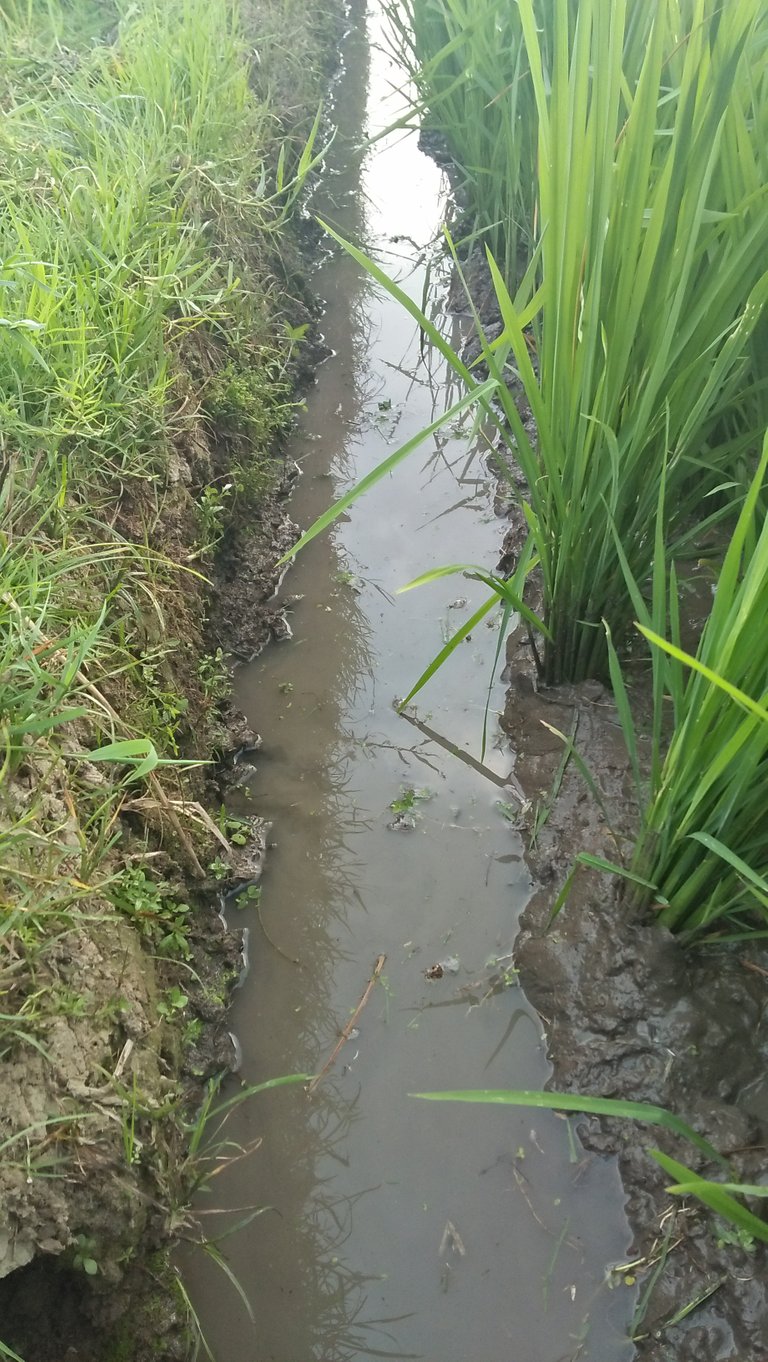
That is my activity in the morning taking care of the rice fields in the hope that it will get a good harvest. I am proud to be involved in cultivating the rice fields and I am proud to be able to share with all my friends in this community.